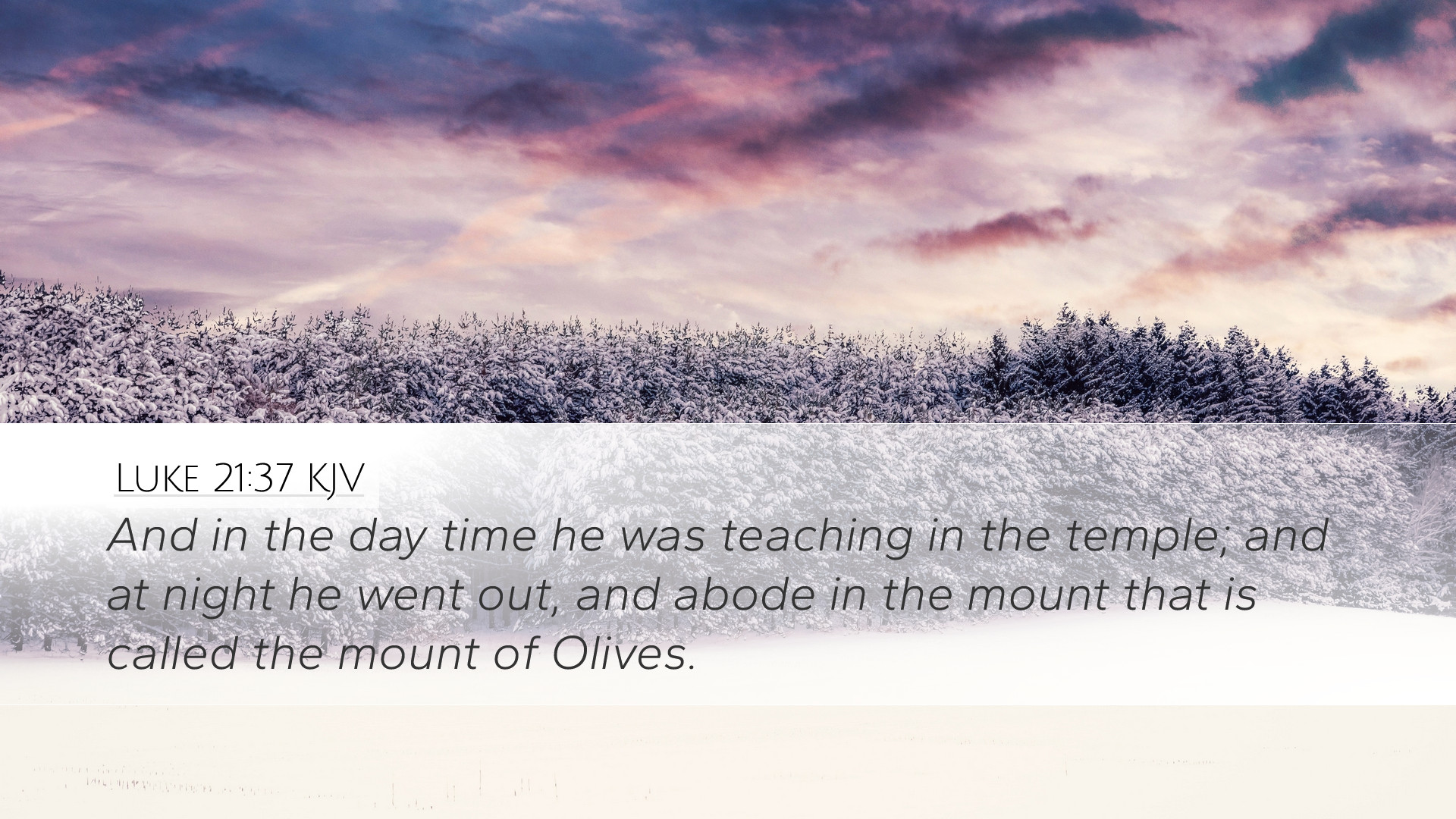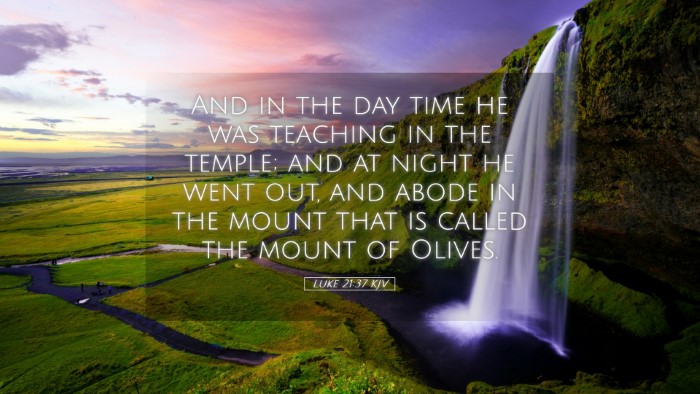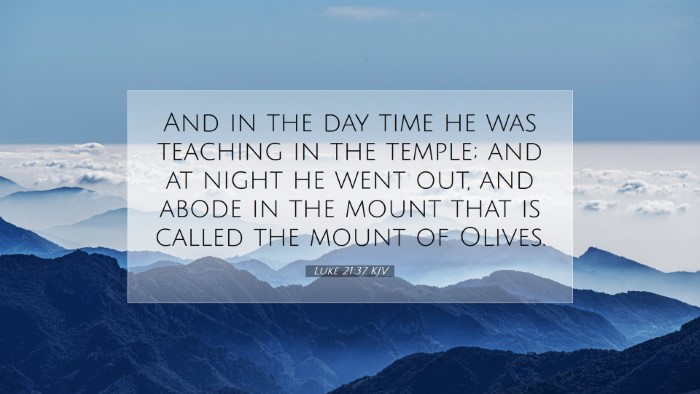Commentary on Luke 21:37
Luke 21:37 states: "And in the daytime he was teaching in the temple; but at night he went out, and abode in the mount that is called the mount of Olives."
Background and Context
This verse is located within a pivotal chapter that encompasses the Olivet Discourse, where Jesus speaks about the end times, the destruction of the temple, and signs of his return. The setting of this particular verse highlights the final days of Jesus' ministry before his crucifixion, illustrating the contrast between his public teaching in the temple and his retreat to the Mount of Olives.
Textual Analysis
The phrase "in the daytime he was teaching in the temple" indicates the public nature of Jesus' ministry and his authoritative role as a teacher. The temple was the central place of worship and learning for the Jewish people, making it a fitting venue for Jesus' profound teachings.
Importance of the Temple
- Symbol of God's Presence: The temple represented God’s dwelling among His people. Jesus' teachings here affirm the transition from the physical temple to the spiritual body of Christ.
- Public Witness: Jesus did not shy away from the public eye; his teachings challenged the status quo and the corrupt practices of the religious leaders of his time.
The Retreat to the Mount of Olives
The mention of Jesus retreating "at night" to the Mount of Olives serves multiple purposes:
- Symbolic District: The Mount of Olives has significant biblical associations, being the location of key events in Jesus' life, including his prayer in Gethsemane (Matthew 26:36) and ascension (Acts 1:9-12).
- Distance from Hostility: This retreat may signify Jesus' awareness of the increasing hostility from religious leaders seeking to undermine his authority.
- Time for Prayer: The mount was a place for communion with the Father, suggesting that Jesus sought strength and divine guidance through prayer during this critical time.
Thematic Insights
1. The Duality of Ministry
Jesus’ life exemplifies the need for both public proclamation and private reflection. While his teachings in the temple were vital for instructing the masses, his time at the Mount of Olives highlights the significance of personal prayer and preparation.
2. The Contrast of Light and Darkness
The day-and-night imagery underscores the stark contrast between Jesus’ teaching (light) and the growing darkness represented by the opposition he faced. This motif of light and darkness is prevalent throughout Scripture, illustrating the constant struggle between good and evil.
Commentary Insights
Matthew Henry
Matthew Henry emphasizes that Jesus’ dedication to teach the people in the temple illustrates His commitment to impart spiritual truths, affirming his messianic identity and divine authority. The juxtaposition of the temple's prominence during the day with the solitude of the mount at night suggests a model for Christian ministry that balances public engagement and private devotion.
Albert Barnes
Albert Barnes provides an insightful note on the geographical significance of the Mount of Olives, mentioning that it served as a place of contemplation and retreat for Jesus. His commentary reflects the importance of taking time away from public responsibilities to engage deeply with God through prayer, especially when facing impending trials.
Adam Clarke
Adam Clarke reflects on the significance of the actions of Jesus in this verse, noting that the juxtaposition of daytime teaching and night-time retreat signifies the tireless labor of a faithful minister. Clarke advocates for the necessity of cultivating a robust spiritual life through prayer, particularly in times of distress or opposition.
Practical Applications
- Balancing Ministry and Prayer: This verse serves as a reminder to pastors and church leaders to cultivate a life centered on both the proclamation of the word and the pursuit of personal holiness through prayer.
- Public vs. Private Faith: Believers should consider how they navigate their public faith within society while ensuring a vibrant, personal relationship with God outside the public eye.
- Finding Solitude: In moments of difficulty or scrutiny, retreating to our "Mount of Olives" can provide needed space for reflection and spiritual replenishment.
Conclusion
Luke 21:37 presents a profound image of Jesus as both a public teacher and a fervent pray-er, illustrating the essential balance that must exist in the life of every believer. As we reflect on this passage, may we be inspired to embody the duality of ministry in our own lives, aligning our public witness with private devotion.


